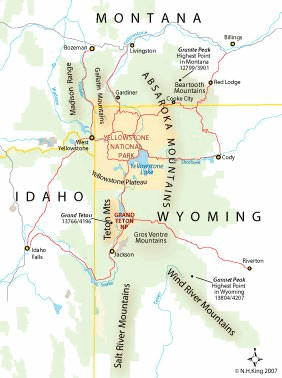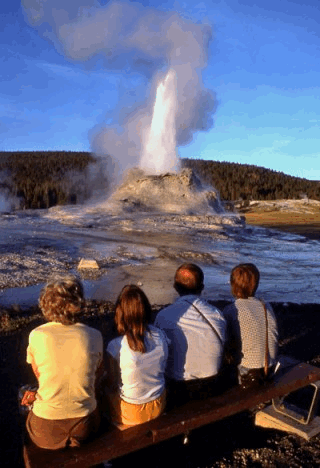Described simply, most of Yellowstone National Park and region is a collection of high volcanic plateaus surrounded by mountains. Plateaus are associated with being flat, or relatively flat, but driving around Yellowstone doesn’t give that impression: There are too many mountains all over the park (for example, Mount Washburn and Sheridan Peak). There are several broad valleys, most with canyons, including the Grand Canyon of the Yellowstone. There are some big lakes, including Yellowstone Lake. Even the true plateau areas, such as the Central Plateau or the Pitchstone Plateau, seem to be pitted, scarred, and not very flat. The ring of mountains around most sides of the park is fairly obvious (Absarokas east and north, Gallatin Range north and west, Red Mountains and Tetons south). In a word, the park’s terrain is best summed up as rugged.
Read More »Destination Yellowstone
If you told your friends or family that you were going to spend some of your vacation in an active volcano, they might think you were crazy. Yet every year more than three million people do exactly that. Yellowstone National Park is a volcano. Almost everything that is special in Yellowstone is the result of being one of the world’s largest active volcanoes, in fact, a super-volcano. Fortunately, Yellowstone’s current volcanic activity is limited to hot water and earthquakes -- no eruptions, flowing magma, or cataclysmic explosions. Yellowstone did the cataclysmic explosion thing about 640,000 years ago and is resting for a possible encore in some more tens of thousands of years. Yellowstone the volcano is not going to erupt anytime soon.
Read More »Seasons and Weather
Nothing is normal in Yellowstone National Park when it comes to seasons: summers are hot, winters are amazingly cold, and spring and fall are short and sweet. There's something for everyone during the four seasons in Yellowstone National Park.
Read More » Yellowstone Insider Your Complete Guide to America's First National Park
Yellowstone Insider Your Complete Guide to America's First National Park


